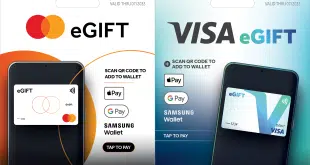Cash use is down and digital payments are up for restaurants. How has this changed the payments landscape for this merchant segment?
Cash use is down. Customers want and demand new ways to order. Staffing is more challenging and costs are going up. For restaurants, this litany of operational issues is the new norm, but not one they can’t adapt to. For payment providers servicing this large merchant community, the new norm means they, too, must adapt. And in both instances, each appears to be embracing the new restaurant POS mindset.
“Prior to the pandemic, it was an uphill battle to sell new ideas to restaurants,” says Ben Vergidis, chief visionary officer at Point of Sale Cloud LLC. “That challenge has been turned around and we now find customers coming to the table with their own unique out-of-the-box ideas that they want to implement.”
That statement is similar to what you’ll hear from many payments specialists who serve the restaurant industry. Many restaurant operators have broadened their expectations of acceptable point-of-sale channels.
“Customer experience expectations are now set by the best experience they have any anywhere—not just with competitors or in the restaurant industry,” says Jennifer Shambroom, chief marketing officer at Clickatell, a chat-commerce provider with U.S. headquarters in Redwood City, Calif.
That’s not the only change since the pandemic, and now, expectations are higher even as it appears to weaken. “When customer experiences get better somewhere, anywhere, that elevates the bar for the brand and every brand,” Shambroom says.
“Additionally, restaurants’ digital and physical integrations expanded,” she adds. “Customers’ picking up food at restaurants increased the need for restaurants to deliver accurate and easy-to-understand ordering information and clear directions and communications around pick up processes, as well as what to do if there’s a problem.”
‘A Fundamental Shift’
At the core of changes in payments itself is cash use. “The biggest change was in cash payments,” Vergidis says. “All of a sudden, literally nobody wanted to handle cash, and of course with most sales happening online, that caused digital payments to become essential to restaurant owners.” By September 2020, early in the pandemic, debit card use was already up 10.8% at fast-food restaurants, found a report from PSCU, a credit union service organization.
“That was a fundamental shift in the industry,” Vergidis says. “Things like contactless payments have been around for years in the United States but there was never a catalyst to push their adoption—the pandemic was that catalyst.”
Prior to the pandemic, cash still represented about 35% of all payments at restaurants, says Ben Pryor, head of innovation at SpotOn Transact LLC, a San Francisco-based hospitality POS specialist. “Now, in 2022, it’s down to about 11% to 12%. Digital payments are the wave of the future, but the cost of that is something each business will have to figure out,” says Pryor.
Though the surviving restaurants, overall, continue to recover, they have felt the pressure on their profits. Earlier this year, cloud-based point-of-sale system provider TouchBistro Inc. said in its annual “State of Full Service Restaurants Report,” that 74% of full-service restaurants managed to maintain or increase their sales in the past two years.
Their profit margins, however, decreased from 12% in 2019 to 10% in 2021. Total restaurant and foodservice sales are projected to reach $898 billion in 2022, according to the National Restaurant Association, up from $799 billion in 2021, and higher than the $864 billion in sales in pre-pandemic 2019.
This, in turn, emphasizes the need for efficient processes and for adopting technology that supports them. “In general, the business model for restaurants is something every small businesses should be looking at now,” Pryor says. “Where is the most margin coming from?”
Real-Time Tips
Pryor says restaurants, along with other merchant segments, benefited from postponement of interchange increases planned by the major card brands. Now that these increases are back in play, merchants will need the correct payment tools to ensure they get the lowest possible rate for card present and card-not-present transactions, he says. SpotOn’s mobile Bluetooth reader, for example, can accept EMV and contactless payments whether card-based or made with Apple Pay or Google Pay.
Now, as more restaurants go full digital, operators must contend with chargebacks, too, something that wasn’t associated with cash transactions. “We partner with our customers to mitigate as much of the risk as possible,” Pryor says. Hence, the handheld card reader, he says. SpotOn also offers a 50-state compliant cash-discounting program, he says. Most issues are around chargebacks, not card costs, he says.
There have been surprises for restaurants and the payments companies servicing them. “Pre-pandemic restaurants focused on pricing. All of a sudden, they learned that customers are willing to pay for convenience and omnichannel ordering,” Vergidis says.
“That caught many by surprise,” he adds. “We would get clients of ours that would say ‘There is a new type of customer out there who is not sensitive to price, and this is someone we have not come across before.’ It reminds me of what is typical for tech businesses—people not only pay for the solution but also for the convenience, and now restaurants have found that this is also true for their business.”
There may even be an opportunity to jump to the forefront of payments and adopt technologies like real-time payments, suggests Erika Baumann, director of commercial banking and payments at Boston-based Aite-Novarica Group.
“It is generally known at this point that the pandemic caused a dramatic shift away from cash,” Baumann says. “While card is still predominant, as things are returning to normal, cash has eased its way back into the process.”
“What I think is more significant is to discuss outgoing payments,” she continues. “Restaurants have an opportunity to keep cash out of the process and to make payments more efficient. Real-time payments, like RTP, have become a critical part of the payments landscape and restaurants have a real opportunity to capitalize on this.
“For example, when employees are cashing out tips at the end of the night, pushing a real-time payment directly to a bank account over the RTP network instead of handing out cash is safer and a win-win for the business and the employee,” she says.
Competitive Edge
Technology is vitally importance to restaurants—a National Restaurant Association report says 80% of operators say using technology provides them a competitive edge—and point-of-sale tech is a critical component of that. It decreases the possible gulf between what a payment company can provide and what a restaurant operator considers essential POS services.
One example is the adoption of QR codes, a barcode scanning technology that is not new but saw strong interest given its ability to provide a contactless-purchasing or menu-viewing experience.
“It is a more collaborative experience and it changes the sales dynamic—we are now collaborating with our clients to build the future together,” Vergidis says. “We see the future as being restaurants wanting to in-source technology and use it as a form of competitive advantage, and they are looking for the innovative solutions we specialize in to … increase their profitability.”
For Pryor, the future of providing POS technology and services to restaurant operators will belong to the providers that can keep up. “Digital ordering as a whole online and being able to interact with a personal mobile device to order and pay for food is only going to accelerate,” he says.





